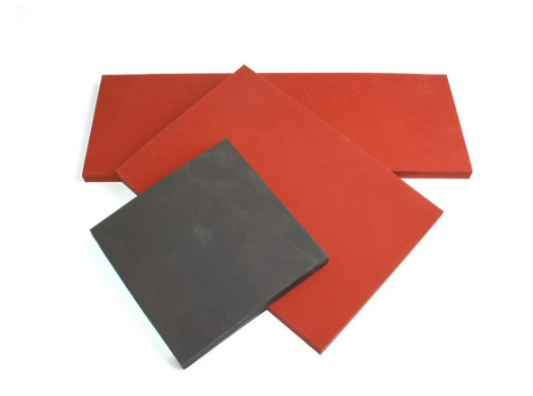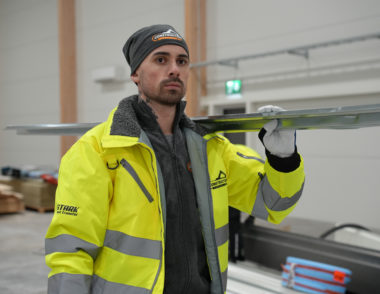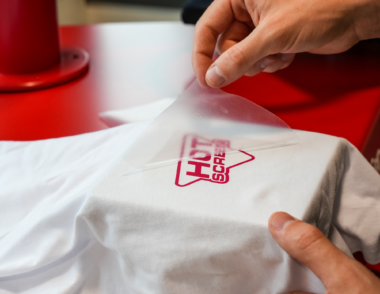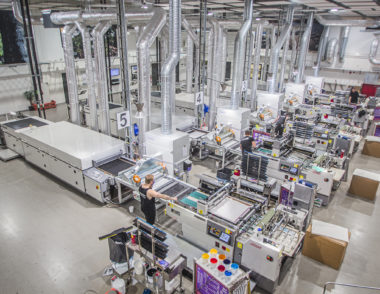About this article
Categories
Issues can often arise when applying heat transfers near on pockets. That’s because applying a transfer requires that the area the heat plate is pressed against is completely smooth and even. A pocket is something raised, which makes the entire printing area uneven which in turn can lead to a worse result or, in the worst-case scenario, a transfer that becomes loose in certain areas after washing.
We have therefore produced a list showing you step-by-step how to successfully apply your heat transfers on pockets. Follow the steps shown below.
Start by configuring your transfer to the recommended settings according to the product you have chosen. Then adjust the pressure on the machine based on the size of the sub-plate being used. We recommend a pressure of 2–3 bar for a small sub-plate and 5–6 bar for a large sub-plate on the heat press.
Make sure your garment is lying straight and flat, and that there are no seams or buttons in the way of or on the pocket you are applying the transfer to. The entire surface touching the base plate must be lying smooth to ensure a good result.
We recommend preheating the garment for at least 5 seconds before the heat transfer is applied. Preheating makes the garment shrink, giving you a nice flat area that the print can stick to properly.
To achieve a good application on a pocket, we recommend “raising” the pocket using rubber pads (see articles 3014, 3012, 3011 & 3003).
You can do this by quite simply placing the rubber pads in the pocket so that the fabric you want to print on is raised up above the seam surrounding the pocket, giving you a properly flat area for the application.
Now, place your transfer on the flat pocket and begin applying. Since the area has been raised using a smaller rubber pad, we recommend reducing the pressure even more. For small rubber pads, you may need to reduce the pressure to less than 2 bar. Our transfer presses automatically end the application when the set time ends.
ATTENTION! On heat presses not manufactured by us, you may need to end the application manually.
Once the transfer is complete, remove the transfer carrier. When using STARK & FLEX Heat Transfer, the carrier can be removed while it’s still warm. When using REFLEX Heat Transfer, the carrier should only be removed once it’s cold.
Once you have finished applying your transfer, we always recommend running your hand over the transfer to ensure that the adhesive has melted correctly. You will easily be able to tell if the adhesive has not melted correctly. If this happens, place a piece of protective paper (art: 3016) on top with the matte side facing down and run the heating iron over it for 10 seconds. Then immediately remove the protective paper and your application is complete.
About this article
Written by:
Max Schelin
Categories
Related articles

Printing on Polyester? Here's How!
Read more

Printing machine for clothes - this is how they work!
Read more

The Digital Number – all numbers in one transfer
Read more

My placements
Read more
To achieve a good application on a pocket, we recommend “raising” the pocket using rubber pads!

About this article
Written by:
Max Schelin
Categories
Related articles

Printing on Polyester? Here's How!
Read more

Printing machine for clothes - this is how they work!
Read more

The Digital Number – all numbers in one transfer
Read more

My placements
Read more

Prints on workwear? Choose the heat transfer Stark!
Products
Tips & Tricks

The plotter print is a variation of our product Stark Heat Transfer.
Products

Learn more about the various print methods in the textile industry.
Print methods
Mon-Thu: 08.00-16.30
Fri: 08.00-15.30
Följ oss!
When you archive an article, it disappears from your webshop and is no longer orderable.
When you activate an article, it disappears from your archive and you can order it again